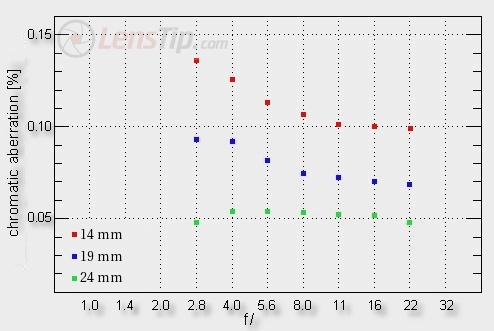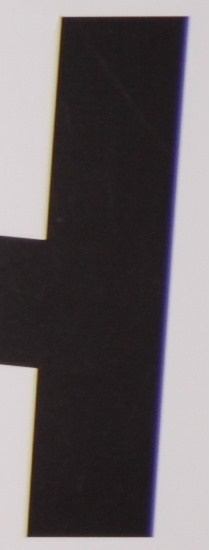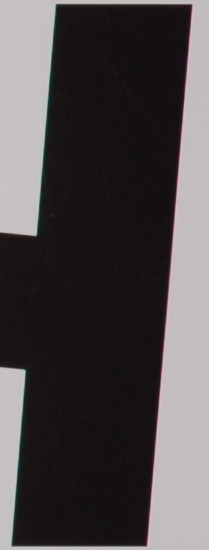Nikon Nikkor AF-S 14-24 mm f/2.8G ED
5. Chromatic aberration

The Sigma 12-24 mm, which is also designed for full frame and is distinctly slower, showed at the shortest focal lengths the aberration definitely above 0.2%.
Please Support UsIf you enjoy our reviews and articles, and you want us to continue our work please, support our website by donating through PayPal. The funds are going to be used for paying our editorial team, renting servers, and equipping our testing studio; only that way we will be able to continue providing you interesting content for free. |
- - - - - - - - - - - - - - - - - - - - - - - - - - - - - - - - - - - - - - - - - - - - - - - -
The full frame Sigma’s 17-35 mm performance was very similar to that of the tested Nikkor but the Sigma offers much narrower angles of view and f/2.8 aperture is available only at the shortest focal length.
To sum up the performance in this category should be assessed very positively. So far we haven’t tested a lens which, with similar parameters, would have better achievements.

|

|






